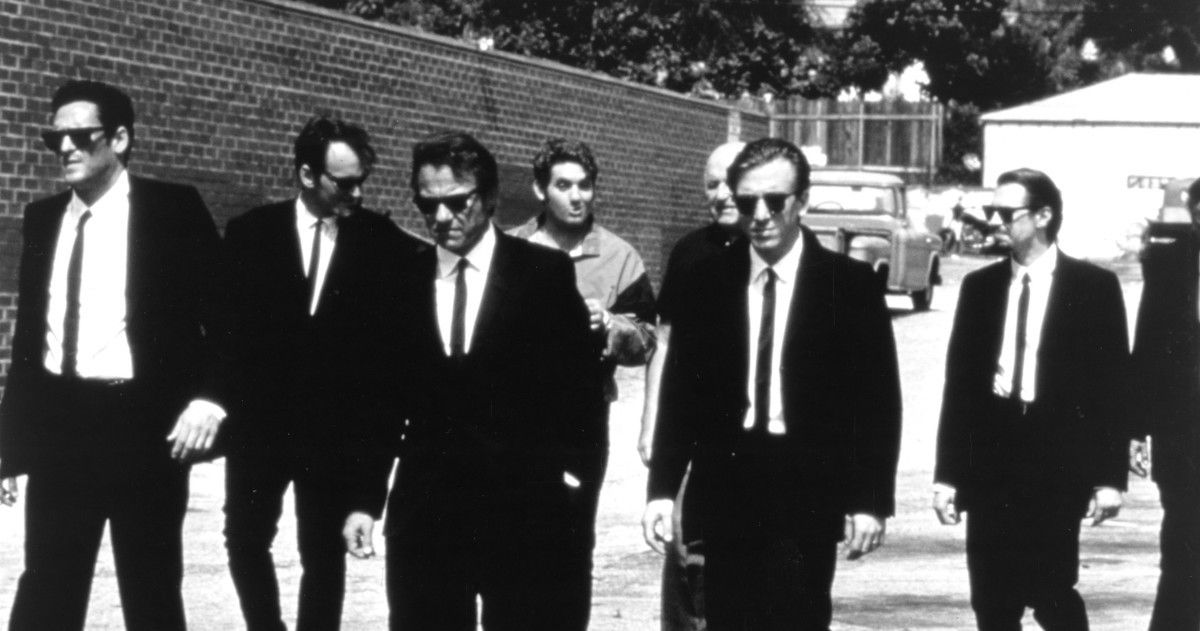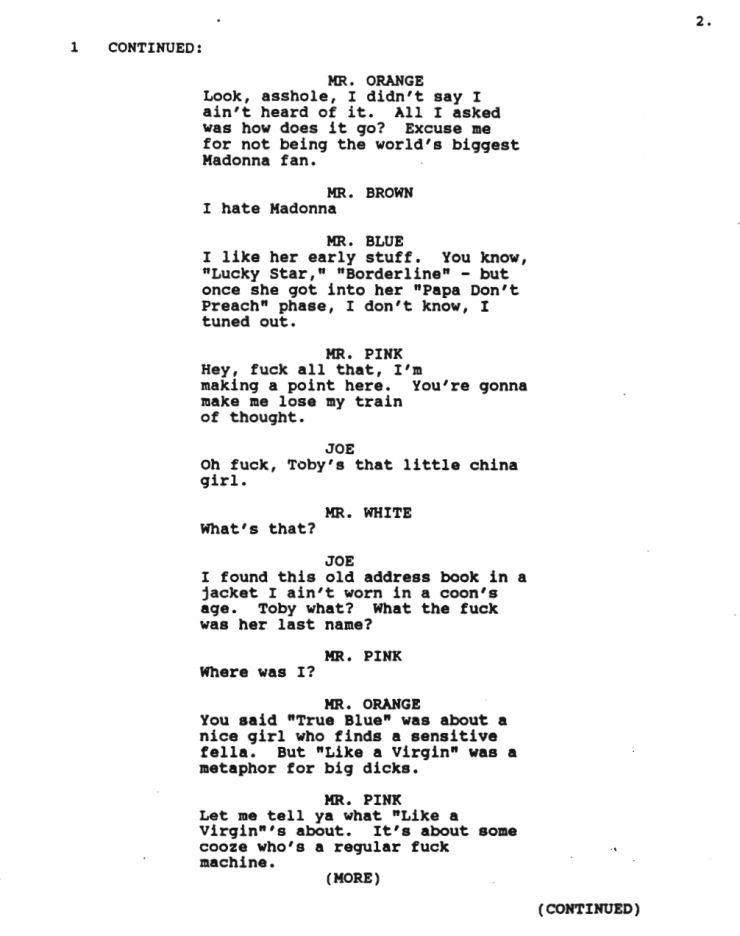
The Reservoir Dogs script is where it all began for Tarantino. Read the PDF and see what you can learn from the screenplay.
Quentin Tarantino was just a video store clerk with a dream when he shopped his screenplays for True Romance and Reservoir Dogs around Hollywood. He wound up selling True Romance and using the heat from it to attach himself as the director for Reservoir Dogs.
The Reservoir Dogs screenplay was passed around by everyone back in the day. It started with a proactive discussion of the song "Like a Virgin" and ended with one of the bloodiest shootouts in cinema history. It was unlike everything produced that came before it and seemed to signal how important Tarantino would become to the generation that followed it.
Today we're going to go over the Reservoir Dogs script, talk about some crucial scenes that make the movie great and look at the character development of a key player in the story.
Check out the Reservoir Dogs trailer, download the script, and let's discuss it after the break!
Download the Reservoir Dogs script PDF here!
The 'Like A Virgin' scene from Reservoir Dogs (the opening scene)
The opening scene of your screenplay needs to hook people right away. It's what keeps them reading the next 90-120 pages. It has to grab the reader otherwise it gets tossed in the rejection pile.
Well, Reservoir Dogs' opening pages start out with an insane manifesto and build into a crescendo. Let's take a read and then jump right in.



I cut us off at page three because I didn't think uploading the first ten pages made sense and I want to encourage you to continue on your own. Plus, you get the gist, things begin and we're right in on the action.
We can tell by the demeanor and dialogue of these guys that they're not only comfortable with each other, but they're also opinionated and determined to prove their own points. We also know they're a bit off. Right away, we know Mr. Pink is the weird one.
We know Joe Cabot is the boss, Eddie is comic relief, and Mr. Brown is the contrarian. We get snippets of who the other people are in an entertaining fashion.
Start the script in medias res, which is Latin for "into the middle of things," makes the audience have to play catchup. It's a great way to get us searching for what's going on, instead of telling us what's going on. This subtly invests the reader in the story and keeps the pages turning.
While this conversation is lewd and probably dated by today's standards, it gives you a snapshot of these guys. They're criminals, they're not concerned with anyone else in the restaurant thinks, but when it comes to tipping, they have a code that needs to be followed.
Either way, the script starts off with an exciting demeanor and sucks us into the underbelly of society.
The Reservoir Dogs Bathroom Scene
One of the best scenes in the movie is the "commode story," or the bathroom scene. What I love about this scene is that it's a big reveal and worked two ways. First, it tells us who the undercover cop is, and second, it shows how deep undercover he's gone.
The details sell the story.
When we finally hear the story within the movie, we know so much hinges on it. Tell it wrong, he's dead, tell it right, he's in.
Video is no longer available: www.youtube.com/watch?v=7P-f-nzOTV4
I think this is a great way to get extra from this scene. First off, it establishes the logic of the movie. We now know why these guys trusted him in the first place. We also know the great lengths our guy will go to in order to stay undercover. It adds tension to every scene after it and recontextualizes every scene that came before it.
So let's talk about one of those scenes and one of those characters.
Reservoir Dogs: Mr. Blonde
Mr. Blonde, played by Michael Madsen, is an interesting antagonist. This is a movie about bad guys. Your main characters are all bad guys. So how can you make one bad guy stand out?
Have them be really, really, really bad.
Like "cut the ear off a policeman he wants to light on fire" bad.

Mr. Blonde doesn't have an arc. He's always this bad.
But the script does an excellent job slowly revealing the badness. We get hints along the way. We know he has a history, we know he's quiet, we know the other guys worry about him, but this all has to culminate somewhere. Enter the captured police officer.
What this script does so well is beginning to payoff these ideas with one big swing, and then dramatically turn the story when Mr. Blonde is shot.
What's next? Read the Pulp Fiction script!
Pulp Fiction was Quentin Tarantino's coming out party in 1994. Now, 25 years later, we look back on its classic script.
Click the link to learn more!
Your Comment